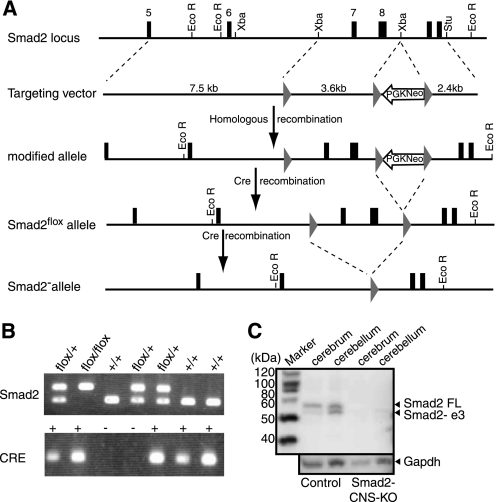FIGURE 1.
Conditional Smad2 targeting allows neural-cell specific Smad2 knock-out. A, a schematic representation of the Smad2 conditional targeting strategy. The upper panel shows a partial genomic map of the wild-type Smad2 gene used in the creation of the target vector. PGK-neo-poly(A) cassette flanked by loxP sites were introduced downstream of exon8. An additional loxP site was introduced upstream of exon7. Arrows indicate selection of the homologous recombinants and Cre-mediated deletion of exons7 and 8. B, genotyping of the Smad2-CNS-KO mice and their littermates. By using the Lox-3S and Lox-2R primers, the 500-bp band was generated from the flox allele, whereas the 351-bp band was generated from the control allele. By using Cre forward and reverse primers, the 100-bp band was generated. C, ablation of Smad2 proteins in Smad2-CNS-KO mice. Western blotting in the cerebrum and cerebellum detected Smad2 in wild-type mice but not in Smad2 mutant mice at P8 (upper panel). The upper band detected the full-length (FL) isoform of Smad2 (58 kDa), and the lower band detected the short isoform of Smad2 lacking exon3. GAPDH was used as an internal control (lower panel).

